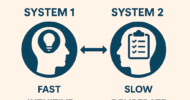When I walked into the exam room, the mom was almost crying because her son’s fever wouldn’t go down. I already knew that this was a simple virus – the kind that gives a high fever for a few days and then a rash. This mom was from Brazil, however, where this sort of infection is barely seen. In Brazil, a high fever that won’t go down equals a good chance of dying from meningitis or pneumonia, so her fears were well founded. But here we were, together in Somerville, MA – not Minas Gerais – and I had to reassure her without making her feel like I wasn’t taking her seriously.
She had already been seen here two days ago and went to the ER last night when she felt like no one was listening to her concerns or helping her child. I made a plan, and the plan had to involve more than just me. In the room next door, my nurse was seeing patients on her own schedule. She had already told me about how upset this mom was because she had talked to her on the phone and overbooked her onto my schedule for the day. She came into the room to see the family and was able to reassure the mom that she would be available by phone and they could come in and see her as well tomorrow in the clinic if they needed to. With two more patients waiting for me, I had to run, but my RN spent another few minutes with her to establish their relationship without me present.
This team-based care is possible now that Union Square Family Health Center has co-located its seven-year-old primary care teams. Co-location is the process of arranging work spaces together by care teams rather than by profession so that all the members of a team work side by side rather than all MAs working side by side, all nurses side by side, and so on.
We have been emailing, paging, shouting and laughing together as teams of a medical receptionist, medical assistant, registered nurse and physician for years now, but had not been able to squish ourselves into a common space. Our site is quite lovely for a community health center: pictures on the walls (that the staff have brought in), a new floor last year, and no cinder block! But the layout was “traditional” with all of us charting and sitting in clumps of professions, not teams. I’ve had days I email and re-email something in a patient chart to my RN, who is sitting just down the hall, over and over again until we get it settled. Getting up and trying to find her would mean losing precious time: I can read and file or read and send ten results in those seven minutes! It may sound crazy, but if we primary care staff are not insanely efficient, the mountain of results, patient calls, consults, forms and refill authorizations will bury us in no time.
The balance of emailing and talking has finally shifted, but we were not without our doubters. Interestingly, the docs were the primary drivers of this change. We have come to depend so heavily on our MAs that not having them immediately available makes us panicky. The MAs have been quite politic about the change: they like to be needed and central to the work, but have also grown quite close over the years and enjoyed being with each other while they work. Having the RNs close by has allowed us to really focus on the patients’ needs. The mom from Brazil, for example, spoke to one RN who was able to confirm with me the plan for this child and be the point person from then on.
Which brings us back to why we want and need to work on top of each other – MD, MA, RN, all in one room though we could barely even find a way to make the desks all fit. We have to figure out how to see all of these patients together, in a way that makes sense to the patient for a change
When I saw that mother and child, instead of feeling helpless, I was able to step out of the exam room and grab the RN right away. Because of co-location, she was immediately available, and made the time in her busy day to see the patient.
We have all had a surge of energy since this re-organization has allowed us to help the patient and each other in real time instead of by responding to emails after the fact. Finally sitting together will make this “dream visit” scenario a daily reality – something we can all proudly sit elbow to elbow to accomplish.
Kirsten Meisinger is medical director at Union Square Family Health Center in Somerville, MA. She blogs at Primary Care Progress.





















![Rethinking medical education for a technology-driven era in health care [PODCAST]](https://kevinmd.com/wp-content/uploads/The-Podcast-by-KevinMD-WideScreen-3000-px-4-190x100.jpg)

